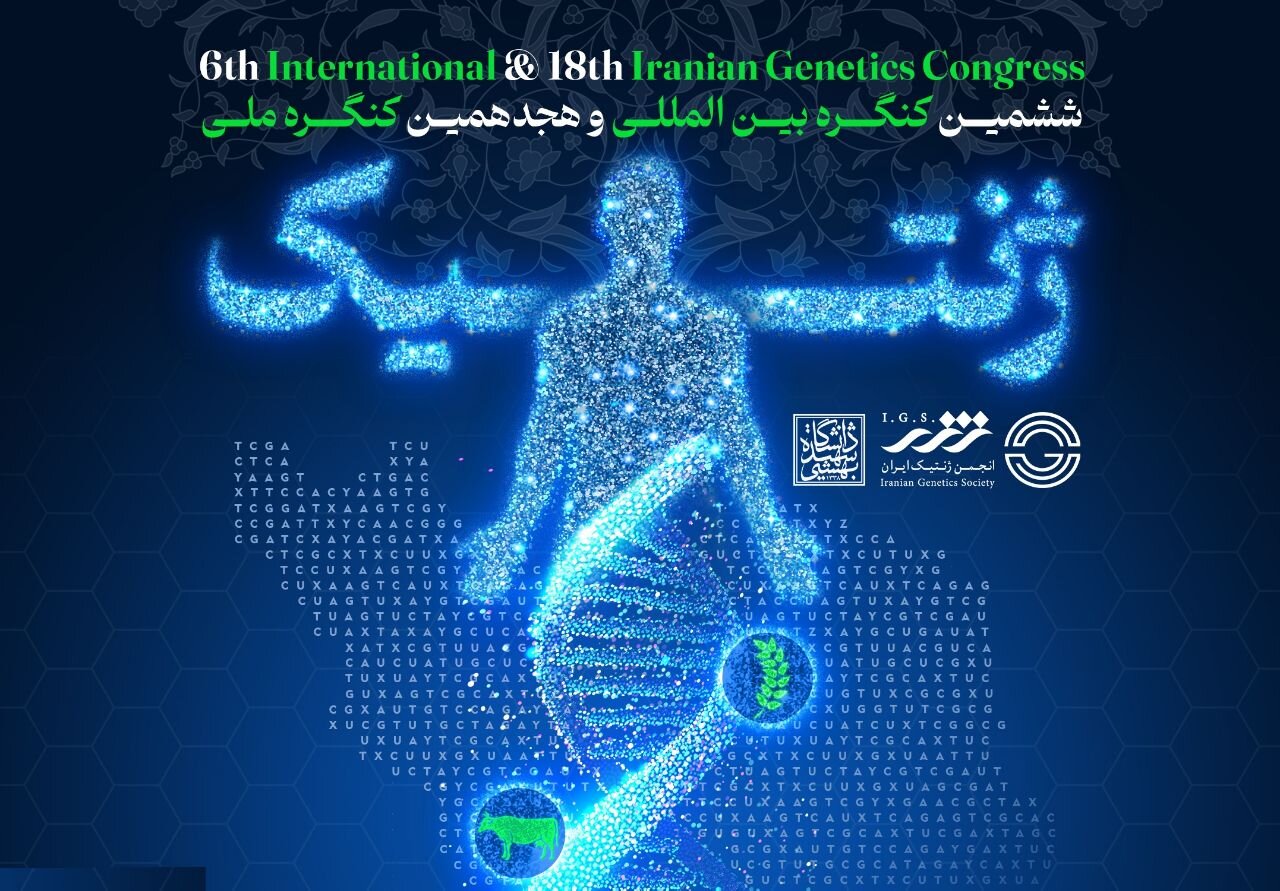Tehran to host 6th Intl. Genetics Congress

TEHRAN –The 6th international and 18th national congress on genetics will be held in Tehran from July 7 to 9.
Hosted by Shahid Beheshti University, the three-day event will be conducted under the theme of ‘ genetics for health; food security; conservation of genetic resources, immediate needs and future necessity’, IRNA reported.
Held every two years, the congress's primary objective is to share the latest global scientific achievements among genetic professors, researchers, and experts.
International universities from Iraq, Afghanistan, and Russia cooperate with Shahid Beheshti University to hold the congress this year, IRNA quoted the president of the Iranian Genetics Society as saying.
While there are 13 climates or variable weather conditions across the world, Iran benefits from eleven climate diversity which has resulted in a variety of genetic and plant diversity. It is considered a highly valuable natural resource for the country, Mokhtar Jalali-Jouran said.
The value of the biological, plant, and animal genetic diversity in Iran is far more than the oil and gas, he stressed.
In terms of genetic science production, Iran ranks 2nd in the region and 22nd worldwide, ISNA quoted the scientific secretary of the congress as saying.
Researchers from 15 countries namely Canada, Spain, the Netherlands, Finland, Australia, the U.S., Germany, New Zealand, Sweden, Hungary, Russia, Afghanistan, Iraq, and Turkey have submitted articles to the Congress, he said.
Out of 794 submitted articles, 758 have been accepted. 64 articles will be presented in the form of lectures and 694 in the form of posters, he said.
The accepted articles were in the fields of human genetics (475), plant genetics (188), animal genetics (179), ethics and biosafety (29), stem cells, and micro-organisms (15).
There will be 20 lecturers both online and in person; and a total of 17 educational workshops will be held during this year's congress, he added.
Iran’s rich biodiversity, genetics
There are 11 types of ecosystems in the world, 9 of which are identified in Iran. Moreover, out of 42 types of wetlands, 41 types exist in the country. Therefore, Iran is one of the 20 countries rich in biodiversity and genetics.
Biological and genetic diversity in the country has caused many plants and animals to be native to Iran, currently, there are 2,100 endemic plant species in Iran.
Five ecoregions, rich biodiversity
Each region is defined by its characteristics that play a significant role in a land's biodiversity and richness, based on which, Iran shares five ecological zones with specific flora from the lowest to the highest parts, namely, Caspian, Iran-Turani, Arasbaran, Zagros, and Persian Gulf-Omani ecological zones.
The great difference between the two latitudes of the north and south of the country and the existence of different plains, altitudes, and climates have given a very diverse view of the vast land so that a variety of vegetation and plant species are grown across it.
The Hyrcanian ecological zone covers the green belt, the southern margin of the Caspian Sea, and the northern profile of the Alborz Mountain range. The forested areas of the region stretch to 2.4 million hectares covering Astara in Gilan province to Glidaghi in Golestan province.
The area of forests in the Iran-Turani ecological region, which covers most of the central plateau of Iran, is 4,666,941 hectares. Based on topographic and altitude conditions, this region is divided into two mountainous regions with a cold climate and a desert with a hot and dry climate.
Arasbaran forests, which are among the semi-humid forests of the country, are located in the province of East Azarbaijan and northwest of Ardebil province, which covers 174,838 hectares.
Some sources date the Zagros oak forests to 5,500 years. The creation and expansion of these forests are due to rainfall raised by the Mediterranean system and the Black Sea, which extends from the Sardasht area of West Azarbaijan to Firoozabad city of Fars province covering an area of 5,440,494 hectares.
The forests of the Persian Gulf-Omani ecological region include part of the southwest and all southern coasts, covering 2,039,963 hectares. Due to ecological differences, the main vegetation is divided into two territories of the Persian Gulf and the Sea of Oman.
MT/MG
Leave a Comment